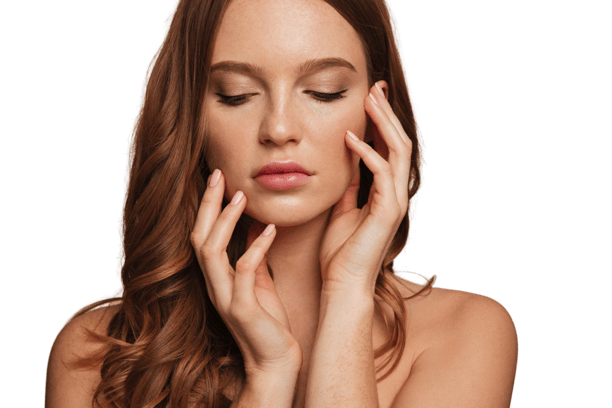Do you want to improve the appearance of your face?

Eyelid surgery (or “blepharoplasty”) is aimed at removing excess skin and fat on upper and lower eyelids. Our patients from abroad who visit us for an eyelid surgery usually report us that people think they are tired, when they’re not.
Indeed, eyelid surgery can help women and men to correct drooping upper lids and puffy bags below their eyes. This condition does make you look older and more tired than you feel, and may even interfere with your vision.
Most of our patients are 35 or older, but if droopy, baggy eyelids are common in your family, you may decide to undergo eyelid surgery at a younger age.
Drooping eyelids are the first and commonest request. The skin excess from the upper eyelid gives a tired and sad look. The operation is performed under local anesthesia and in 1 hour we remove the sagging skin.
During consultation with Dr. Benito, we will give you specific instructions on how to prepare for surgery, including guidelines on eating and drinking, smoking, and taking or avoiding certain vitamins and medications. Carefully following these instructions will help your surgery go more smoothly.
Eyelid surgery is usually performed on an outpatient basis, under local anesthesia and light sedation. Blepharoplasty usually takes one to two hours, depending on the extent of the surgery.
In a typical procedure, we make incisions following the natural lines of your eyelids; in the creases of your upper lids, and just below the lashes in the lower lids. The incisions may extend into the crow’s feet or laugh lines at the outer corners of your eyes. Working through these incisions, we’ll remove excess fat. Blepharoplasty will not solve the droopy eyebrow or the crow’s feet. These would need additional procedures to correct them.
In lower eyelids, we favour the transconjunctival blepharoplasty. In this procedure the incision is made inside your lower eyelid, leaving no visible scar. This is actually the commonest technique for lower eyelid as it has fewer potential complications, recovery is faster and there are no visible scars. In men, transconjunctival approach is our preferred technique, because eyelids in men are more lax and the risk of a round eye because of retraction of the skin of the eyelid is higher.
To correct the dark and hollow circle of the eye, we use the own fat bag to fill in. This is named trasposition of fat. For hyperpigmentation we use either nanofat, carboxitherapy or the Q-switched laser.
You will have to keep your activities to a minimum for three to five days, and to avoid more strenuous activities for about three weeks. It’s especially important to avoid activities that raise your blood pressure, including bending, weight lifting, and rigorous sports. You may also be told to avoid alcohol, since it causes fluid retention. Healing is a gradual process, and your scars may remain slightly pink for six months or more after surgery. Eventually, though, they’ll fade to a thin, nearly invisible white line.
The positive results of your eyelid surgery -a natural and youthful look- will last for years. Due to the follow-up of our patients from abroad we also know that for many of these women, the results are permanent.
ExcelenteA base de 352 reseñas Trustindex verifica que la fuente original de la reseña sea Google.
Trustindex verifica que la fuente original de la reseña sea Google. Laura RobertMaravillosa experiencia con la Doctora Salvador!!!Trustindex verifica que la fuente original de la reseña sea Google.
Laura RobertMaravillosa experiencia con la Doctora Salvador!!!Trustindex verifica que la fuente original de la reseña sea Google. Loreto GinerEstic encantada! Son els millors!Trustindex verifica que la fuente original de la reseña sea Google.
Loreto GinerEstic encantada! Son els millors!Trustindex verifica que la fuente original de la reseña sea Google. Alessandro Garrido CorcheroMuy profesionales. El trato es atento y cercano. Los resultados óptimos. He quedado muy satisfecho, los recomiendo totalmente.Trustindex verifica que la fuente original de la reseña sea Google.
Alessandro Garrido CorcheroMuy profesionales. El trato es atento y cercano. Los resultados óptimos. He quedado muy satisfecho, los recomiendo totalmente.Trustindex verifica que la fuente original de la reseña sea Google. Lanochka LerinaEs la mejor clínica. Yo fue operado por el Dr. Benito. Durante mucho tiempo elegí una clínica y un médico, dudé. Pero tuve mucha suerte, ¡caí en manos de oro! Estoy muy contenta con el resultado inmejorable. El doctor es un especialista muy atento y elegante. Todo el personal de la clínica es muy agradable. ????????✨????Trustindex verifica que la fuente original de la reseña sea Google.
Lanochka LerinaEs la mejor clínica. Yo fue operado por el Dr. Benito. Durante mucho tiempo elegí una clínica y un médico, dudé. Pero tuve mucha suerte, ¡caí en manos de oro! Estoy muy contenta con el resultado inmejorable. El doctor es un especialista muy atento y elegante. Todo el personal de la clínica es muy agradable. ????????✨????Trustindex verifica que la fuente original de la reseña sea Google. AliasMuy buena clínica, la doctora Salvador explica todo de manera que sabes que estas en buenas manos.Trustindex verifica que la fuente original de la reseña sea Google.
AliasMuy buena clínica, la doctora Salvador explica todo de manera que sabes que estas en buenas manos.Trustindex verifica que la fuente original de la reseña sea Google. iliane emEspectacular resultado gracias al dr.benito y a su equipo????Trustindex verifica que la fuente original de la reseña sea Google.
iliane emEspectacular resultado gracias al dr.benito y a su equipo????Trustindex verifica que la fuente original de la reseña sea Google. María SalustiaHace más de 15 años que confío en el doctor Jesús Benito. Un gran cirujano y una persona encantadora. Gracias por todos los cuidados !!!!Trustindex verifica que la fuente original de la reseña sea Google.
María SalustiaHace más de 15 años que confío en el doctor Jesús Benito. Un gran cirujano y una persona encantadora. Gracias por todos los cuidados !!!!Trustindex verifica que la fuente original de la reseña sea Google. Jlcortacans1970 YoMuy agradecido al Dr Benito por la confianza que se gana y que te ayuda a tomar decisiones. Muy satisfecho con su profesionalidad y los resultados. Y muy contento con su equipo por lo cómodo y fácil que te hacen todo.
Jlcortacans1970 YoMuy agradecido al Dr Benito por la confianza que se gana y que te ayuda a tomar decisiones. Muy satisfecho con su profesionalidad y los resultados. Y muy contento con su equipo por lo cómodo y fácil que te hacen todo.
He worked at the Hospital Clínic in Barcelona as a specialist in Plastic and Reconstructive Surgery for 16 years.
Fifteen years ago, together with two other professionals, he founded Antiaging Group Barcelona, at the forefront of Aesthetic Medicine and Surgery. He has developed professionally in the field of care, research and teaching, being his fields of interest facial surgery, breast surgery and body contouring with implants.
In breast surgery he is a specialist in transaxillary breast augmentation and secondary breast surgery. He has introduced the use of ultrasound in Plastic Surgery and recently the use of 3D implants in thoracic malformations.
It is not possible to give an exact date for the duration of a blepharoplasty, but it is rare to have to reoperate. In case of upper eyelids it is usually necessary to treat the position of the eyebrow, rather than to remove skin again. The bags usually do not reappear.
Especially the first 2 or 3 days are essential. The more rest, the less inflammation and faster recovery. For work, one week.
Medical Quality







Follow us